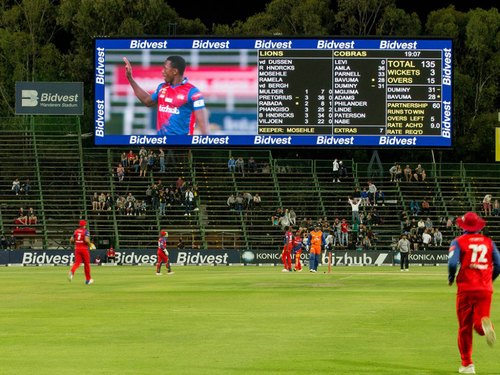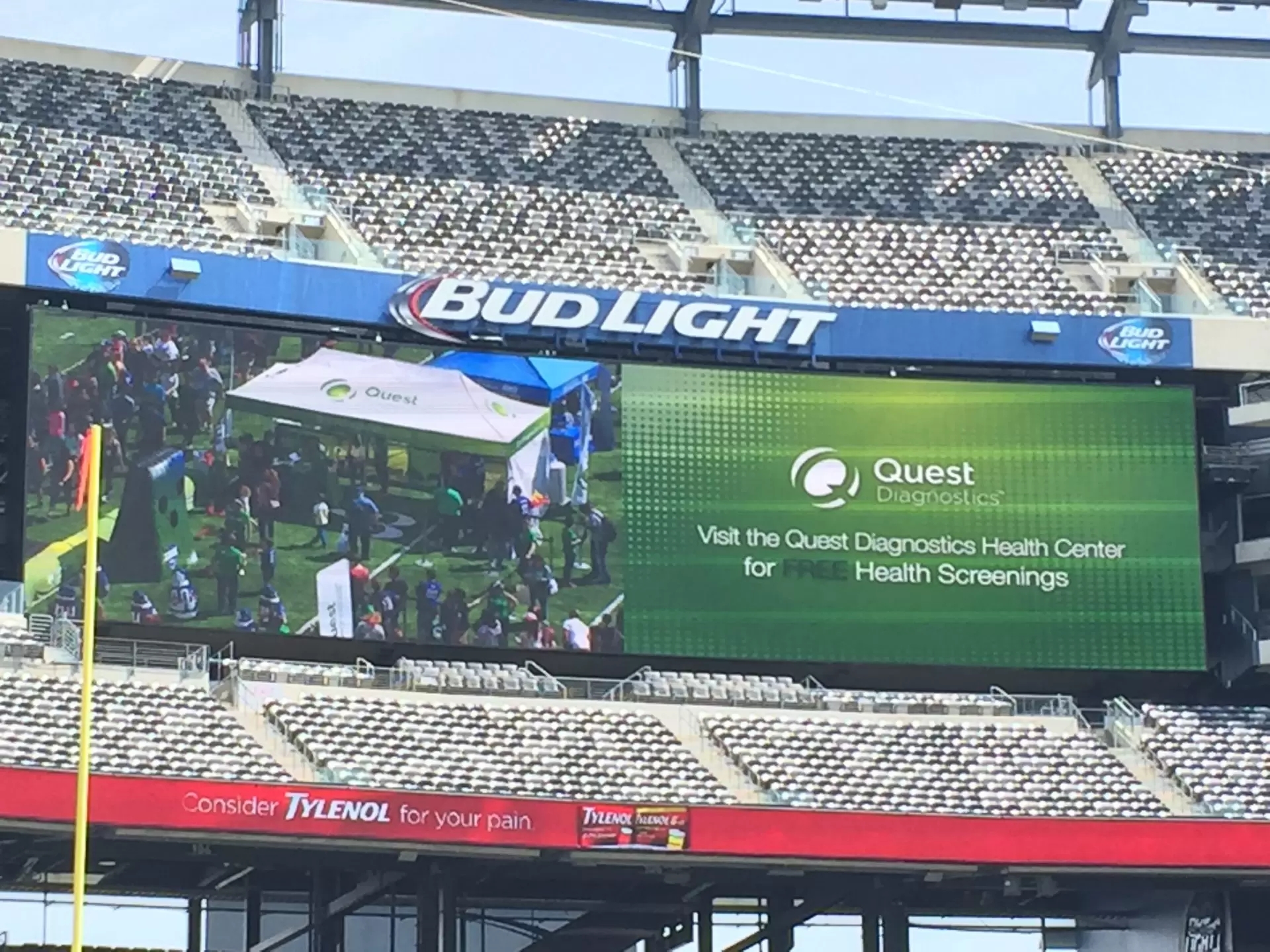Stadium LED Screen – Top Considerations of Choosing One
Why do you need a LED display screen for the stadium?
The history of stadium LED screens
What to consider when choosing stadium-LED screens?
Is LED or LCD better for outside viewing?
How to choose the right pixel pitch for a stadium-LED screen?
Conclusion
Stadium AVOE LED screens are being used more and more to display images at sporting events. They help entertain the crowd, broadcast messages and provide a memorable experience for spectators. If you are considering installing one in your stadium or arena, then you have come to the right place! Here is everything you need to know about choosing a stadium led screen: how they’ve evolved over time; what type of content they can be used for; which technology type is best suited for outdoor viewing; why pixel pitch matters when choosing an LED or LCD screen–and much more.
Why do you need a display screen for the stadium?
If you own a football stadium, then you are more than likely aware of the importance of a display screen. Whether you need it to show live video feeds, commercials, or game footage from another stadium, there is no better way to get your message across than with a high-quality display board that can be seen by everyone in the stands. Here are the benefits of using a display screen for the stadium.
1. Longer lifespan
Display screens for the stadium have a much longer lifespan and can be used more often than traditional scoreboards. The average lifespan of an LCD or LED display screen is around 25,000 hours (approximately eight years). This means that the typical life expectancy would last well beyond any game played at your stadium!
Displays are not as susceptible to weather conditions like rain, snow, or sun glare because they’re made to overcome these environmental factors. They may need some adjustments to maintain their brightness when it’s raining outside, but this usually isn’t an issue.
2. Power saver
A stadium LED display screen is also a power saver. This means that it can reduce the power usage of your stadium, which could translate into savings for you in the long term. They will even help to keep energy costs down and allow you to switch off or dim any other traditional form of lighting at your sports venue – this includes spotlights on signage, security lights around seating areas, as well as decorative interior light fixtures throughout the stadium.
Display screens are made with an LED backlight, so they use much less electricity than LCD boards (which require constant refreshing). The next time your utility bills arrive, consider how many hours per day these displays would have been running without them!
3. Programmable lighting control
Display screens also offer built-in programmable lighting control, which can be used to create a unique atmosphere at your stadium. This means you can change how it looks depending on what game is being played, even during halftime or other breaks between games!
A LED screen will allow for many preset light effects such as smooth transitions from color to color, blinking lights, strobe effects (e.g., lightning), fading in/out, etc. This allows you to really make your display stand out by creating something memorable for fans of all ages.
Nowadays, plenty of apps are available that help with controlling these features remotely via WiFi connection – great if you’re not near the venue when making changes!
4. More professional and presentable
Display screens provide a more professional and presentable look for your stadium. The large size and high quality of the images help to create an overall feel that is much different than what you would get with just using traditional scoreboards (e.g., flip-board boards or chalkboards).
A good example of this difference is when comparing LED vs. LCD displays: LED screens are usually larger in size due to their higher resolution so they can show clear, detailed text as well as graphics such as logos; whereas LCD panels have lower resolutions which can result in blurry texts or distorted videos if not sized correctly.
5. An extra way to do advertising
AVOE LED Display screens can also be used as a different way to do advertising. You’ll find that stadium display screens are often a popular space for advertisers, which is why you see all of the adverts on TV during major sporting events (e.g., World Cup or Olympics). It’s important to note, though, that if your venue has any sort of restrictions when it comes to sponsorships, then only certain ads will be allowed there – but this is still a great opportunity!
There are many more benefits than using stadium-led screen boards regarding efficiency and cost savings, so make sure you include these considerations when choosing your next board!
The history of stadium led screens
A company called Jumbotron was one of the first to sell stadium-led screens. The year was 1985, and they were looking for a way to make their product more competitive in an already crowded market – but this is when LED displays really started taking off! This resulted in some major changes which still impact how these boards are designed today:
Stadiums with high capacities needed higher resolutions due to large numbers of people watching from far away, whereas smaller venues benefited by using lower resolution panels as it would be difficult enough trying to see what’s happening on screen without any further limitations (e.g., blurriness).
In 1993, the Digital HDTV Grand Alliance introduced HDTV technology at its new digital scoreboard installation in the United States.
The next major change was to use LCD technology for stadium displays instead of traditional LED screens. This allowed for a higher resolution which made it easier on spectators and improved viewing angles – meaning that there is less distortion even if you’re looking at it from an odd angle! But this meant that display boards were no longer limited to being just four feet wide as before because they could be bigger without sacrificing quality (e.g., 160 inches)! This has been one of the biggest changes when designing these boards since then.
What to consider when choosing stadium-LED screens?
There are many aspects to consider when choosing a stadium-LED screen. These can be;
1. Energy efficiency and brightness contrast
When you’re considering a stadium-led screen, it’s important to consider the energy efficiency and brightness contrast.
The entire purpose of these boards is so that people can see what’s happening – and if they can’t, then there isn’t really much point! It doesn’t help anyone either when displays are dim or too bright, as this could be harmful to viewers in some cases (e.g., those who have epilepsy).
Therefore, you need a display with good coverage across all spectrums of light, such as warm lights, and one with an optimal level of brightness contrast because this will ensure everything is clear on-screen without being overly distracting.
2. Installation choice
If you’re going to invest in a stadium-led screen, it must be installed correctly so that all spectators can see the display properly. These displays range from eight feet wide up to 160 inches, and four different installation choices will depend on your venue size (e.g., if you have a small space, then wall mounted is probably best for this).
For larger venues with more room available, there may be an option of installing them as floor or ceiling mounted screens which allow for higher resolutions because it’s set at eye level instead of below ground level! But these do require some additional work when it comes to mounting brackets etc., whereas a low profile – such as one inch high – won’t need additional work.
3. Viewing distance and angle
When it comes to stadium-led screens, you need to consider what viewing distance and angle are required.
For instance, if your venue has a lot of seating in the back, then perhaps there’s no need for large displays with high resolutions because they won’t be viewed well from such a long way away! But more importantly, this means that those spectators at the back will have an excellent experience watching without any interference or distortion, which may happen when viewing on a smaller screen – even one as big as four feet wide.
However, if you’re looking for higher resolution due to space limitations, then low-profile displays are probably best suited in these cases where safety isn’t much of an issue.
4. Screen protection
In the past, stadium-LED screens were prone to damage due to wear and tear from regular use. However, recent advances in technology have made it much more difficult for these displays to be scratched or cracked – so screen protection is now a lot less of an issue. This doesn’t mean that you avoid this aspect entirely, though there are still cases where this can happen if your venue has limited space.
Some possible options for keeping your display protected include: using police tape or protective film on surroundings (e.g., surrounding walls), adding additional layers like bubble wrap, etc.; but also just taking care when cleaning them with liquid cleaners, which could result in water-related marks being left behind on the board itself).
Is LED or LCD better for outside viewing?
This may come down to preference depending on your venue and what you need the displays for.
LED screens are brighter, more colorful, and have better resolution than LCDs which means they’re great for those who want a sharper image, but it also doesn’t help that LEDs require less power, so they will save money in the long run!
However, LCDs offer an advantage when used outside because their backlights can be turned off (whereas LED’s cannot), meaning this could be important if you’re not using them at night or during overcast conditions. They also have higher contrast ratios, which is essential for people with poor vision as it improves text visibility by increasing the brightness difference between foreground and background images/textures).
How to choose the right pixel pitch for a stadium-LED screen?
The pixel pitch of the display will play a big part in how clear and crisp images are on-screen, but it also depends on other factors such as viewing distance, resolution, etc. For instance, if you’re looking for displays used outdoors, there’s no point in spending money on high resolutions because they won’t be seen from far away! So this is something to take into account when choosing which stadium-LED screens you need.
Conclusion
There are many things to consider when choosing the appropriate stadium-LED screens, such as viewing distance and angle, installation choice, viewing quality, etc. However, if you’re unsure of what type of display is best for your venue, then there’s no need to worry because this blog post should hopefully have provided a few points on how to choose wisely.
Post time: Feb-11-2022


